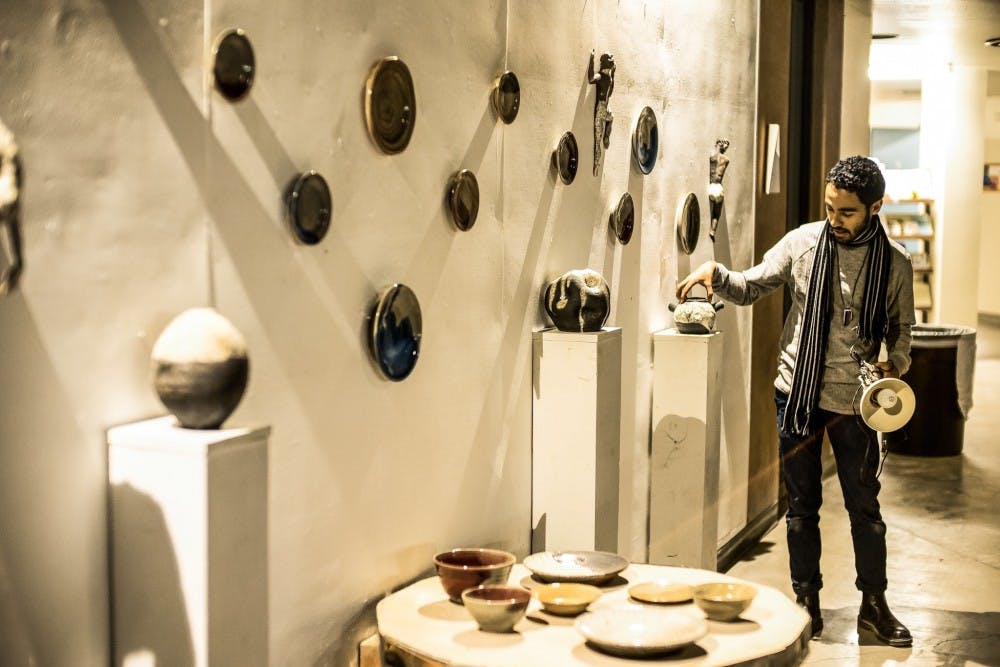Figure can complement the functional, something that was made evident at the “Figure Function Fire” ceramics show organized by UNM studio art majors Miguel Lastra and Jessi Penrod and held in the UNM art building on Thursday.
This duo of advanced ceramics students presented their semester’s work from Studio Intensive Ceramics, which displayed their work that was created via different firing techniques to create a stunning collection.
The work as a whole is a representation of different styles of kiln firing coming to one. The team said their intentions were to “show a wide range of firing techniques,” with some of their processes including Raku and gas-firing. Those represent two forms of reduction — the process of starving the kiln of oxygen.
The gentle shapes of the figures lying in fragile positions against the wall retained a huge emotional quality that was matched with the deep grays, reds and greens utilized in the vessels and ceramic dishes.
Lastra and Penrod explained that the setup is a display that will help to better “understand the variety” of different firing techniques. One in particular was a technique, described by Lastra, that called for removing the pieces from the kiln before the glaze had set, resulting in a smooth and bubbly texture.
Both Lastra and Penrod are talented and driven artists. Lastra took excerpts from his own personal poems as inspiration for his figures, which have been described as “sweetness of the male form” by Yvette Nary, a fine arts major.
Nary called the figure stunning, but didn’t understand why some of them were laying on the wall. Many questions about the decisions made by the artists are still unanswered, but art can only be appreciated from the viewpoint of each individual; everyone may see something completely different than the last.
Penrod, on the other hand, has always been a painter, but said “the clay pulls you in, and if you put the work, in you can truly connect with the clay.”
Dune Alford, a fine arts student attending the show, was enthralled by the pieces and said it’s a “presentation of quality that creates beauty.”
Ceramics has always been a beautiful representation of functionality, and can especially be crucial for a society and culture. It’s a piece of art that has to be molded and formed by the hands of the creator in the form they desire, and then that piece can be used to carry water or store food. Lastra says “clay is seductive” because anyone can try it and end up falling in love with the soothing connectedness it offers.
However, ceramics can also be a risky business. Lastra and Penrod gave a quick explanation about how many factors must be considered, and how many things can go wrong throughout the long process of molding and firing clay. Pieces are usually very fragile, and can crack, break or even explode in the kiln.
Despite the arduous nature of the process, the duo expressed how working with clay can result in real satisfaction.
Get content from The Daily Lobo delivered to your inbox
“It’s something tangible that you can keep and maybe even use for so much time,” Penrod said.
What really makes it fun, they said, is how “unpredictable” the process can be, but it keeps them coming back.
Savanna Molina is a culture reporter for the Daily Lobo. She can be reached at culture@dailylobo.com






